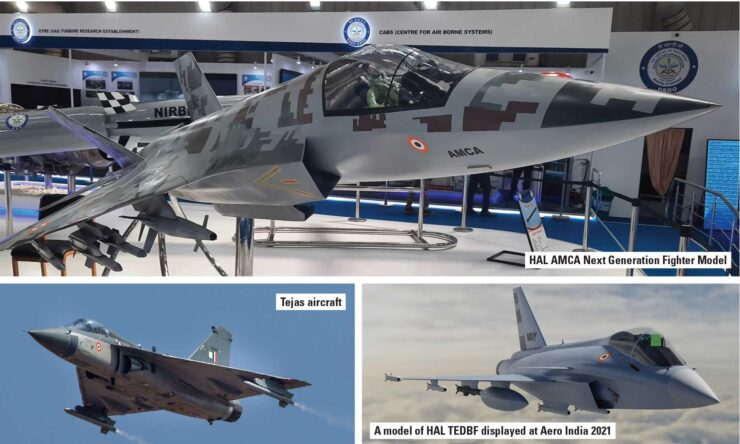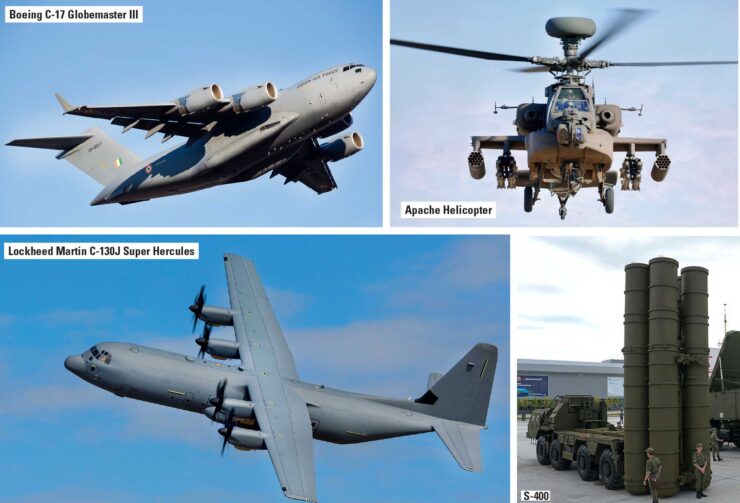
The ongoing conflict in Ukraine has many cautions for India. War at anytime and anywhere is human catastrophe and therefore, all efforts to prevent or stop war should not be spared. While the American-led side wants India to take a stand in favour of their position, the Russian side is appreciative of India’s neutral stand. Recent visits by leaders from the USA, UK, EU, and Japan have emphasised the need for India to condemn Russia’s actions in Ukraine.
What is of concern, however, is the fact that the USA and others stressing their view that India’s excessive dependence on Russia for its military equipment is the reason for its refusal to support their sanctions on Russia. Various officials from the US State Department and the DOD have openly advocated their objective of weaning India’s defence imports from Russia. There lies the real issue.
India’s defence market is too huge and attractive for Western defence industries, and hence, it is the focus of strategic dialogues of many of these countries with India. India has diversified its military procurements in the last three decades to ensure it does not become vulnerable to a single source supply. As a result, India’s defence supplies from Russia, which was as high as 70-75% in the early 2000s came down to a current level of 50-55%. The US has been the biggest gainer in this diversification, garnering nearly $ 22 billion sales to India in the last 15 years to emerge as its number 1 supplier. The Ukraine conflict and the resultant sanctions are being used by the USA to pressurise India to reduce its imports from Russia. The real objective is to ensure the US and its European allies replace Russia as India’s major if not exclusive supplier of defence equipment. The threat of CAATSA on India’s S-400 air defence missile deal with Russia is a prime example. The crux of India-USA strategic partnership is really about capturing India’s defence market for the Military Industrial Complex of the USA.
The current global environment highlights the increasing importance of indigenisation and self-reliance in defence industry for India, and hence, the critical importance of ‘Make in India’ or Atmanirbar policy. Modernisation of the Indian Air Force assumes critical importance in this scenario. IAF’s force structure and its operational capability rests on its ability to marshal cutting edge technologies. The IAF is the sword arm of India’s military power. A variety of reasons, chief among them being inadequate and timely budget allocations and inefficient project management of indigenous programs, have contributed to continuous decline in the force structure of the IAF in the last two decades. However, it is now of critical importance that the national leadership accelerates indigenous development with major focus on the modernisation of the IAF.

There have been significant capability enhancements in areas of tactical and strategic airlift aircraft (C-130J) and C-17 transport aircraft, Sikorsky heavy lift helicopters and Apache attack helicopters, Radars and Integrated Air Command and Control System, AFNET communications, air defence missiles (MRSAM), precision weapons, surveillance systems, and drones. However, in its core strength of fighter/attack aircraft, the decline is yet to be reversed. While two squadrons of Rafale 4.5 generation fighters have entered service, the decline in squadron strength is still worrisome. The IAF will retire the last of the vintage MiG-21Bis aircraft by 2025. The next older fleets of Jaguar, Mirage 2000, MiG-29, totalling nearly 200 aircraft should be retiring by 2030-2035. By 2030, the IAF would be down to 28 squadrons as against the authorised strength of 42 squadrons. The induction of 83 Tejas Mk 1A is unlikely be completed before 2030 even under most optimistic estimates.
The Su-30 MKI aircraft (nearly 300 aircraft) that form the mainstay are long overdue for upgrades. Effectively, the IAF needs to induct nearly 400 aircraft in the next decade and a half if it desires to restore its strength to the authorised levels. The current global environment, and the indirect pressure being mounted on India to buy more aircraft from the West are all strategic warnings that the IAF should recognise. IAF should take the lead in strategising the accelerated development of India’s indigenous fighter aircraft in parallel with the build up of its operational strength.
What are the options? It is said that adversity can turn out to be a blessing in disguise. IAF’s current situation should be turned into opportunity for maturing Indian design, development, and manufacturing capabilities. India’s first experiment with fighter aircraft development, HF-24 Marut, was a success despite the many challenges and flaws associated with it. It was a rapid development, from the drawing board to series production in less than ten years, and one of the finest airframe designs of its time, thanks to Dr Kurt Tank. It became a victim of the Cold War geopolitics. The next aircraft development was the LCA, now called Tejas. There was no continuity from HF-24 to the Tejas, and this was a strategic blunder. The LCA project became a vehicle for developing new technologies. The aircraft took more than three decades to fructify and enter series production. Now that we have the basic Tejas in series production, we must avoid the mistakes of the past and build on the Tejas expertise and experience.

The LCA Mk 1 is a lightweight aircraft built to requirements that were set in 1985. Hence, while the concluded orders will result in the manufacture of 123 aircraft, the next derivative should become the mainstay of the IAF. IAF is looking at Tejas Mk 2, which will be a heavier aircraft at 17-18 tonnes while the Navy is looking at a twin-engine deck-based fighter (TEDBF). If resources are to be optimised the IAF and the Navy should be combining the two ideas into one twin-engine platform derived from the basic LCA. This should use engines with more power (GE-414), indigenous avionics and weapons, and a significantly a large radius of action in the MMRCA-Rafale class. It is possible to develop this aircraft rapidly and enter series production before 2030. A production run of a minimum of 300 aircraft is possible. The IAF will need to plan and execute many interlinked strategies in this program. First is to enable substitute technologies in avionics, sensors, and weapons. This is possible. Second is to put in place effective supply chain mechanism to ensure uninterrupted manufacturing. The third is to develop substitute materials within India, a major challenge.
The government and the IAF have also indicated the plan to float a tender for the acquisition of 114 MRCA fighter aircraft. This acquisition should result in the selection of the vendor who should be tied to long-term stakeholder partnership in terms of license production, technology transfer, global exports from India, and commitment and responsibility in developing the 5th generation fighter AMCA. The government and the IAF should ensure that this acquisition should be leveraged to the maximum in terms of technology acquisition and the development of mastery over the design and development of critical components, sensors, materials, and the aircraft. We must remember that all countries, the US in particular, do not part with technology unless we demand and leverage them through the long-term business that we offer.
Russia-Ukraine conflict is sure to lead to a new Cold War and split the world into two major camps. The need for the IAF to be equipped with weapons, sensors, and aircraft, produced largely by Indian industry is an imperative in the interests of national security and national power. If India is to play a strong role in this changing world, its military power, aerospace power in particular, must be rooted in the Indian industry.
–The writer is a former Deputy Chief of Integrated Staff at IDS. He is now the President of The Peninsula Foundation at Chennai. The views expressed are personal and do not necessarily reflect the views of Raksha Anirveda









